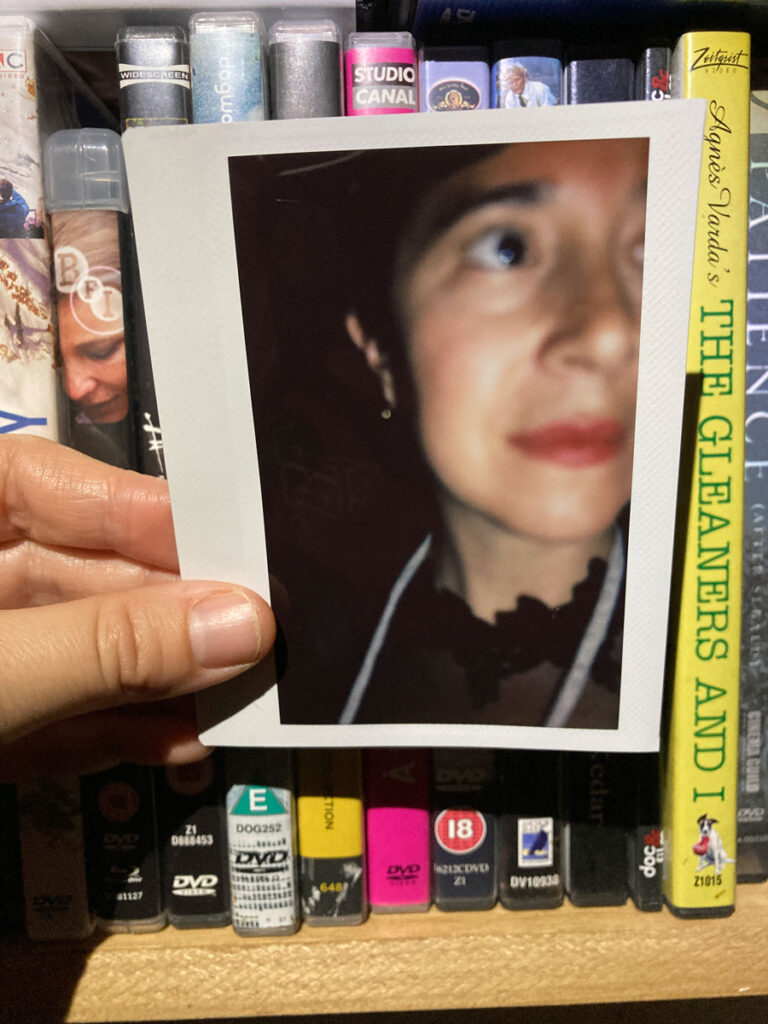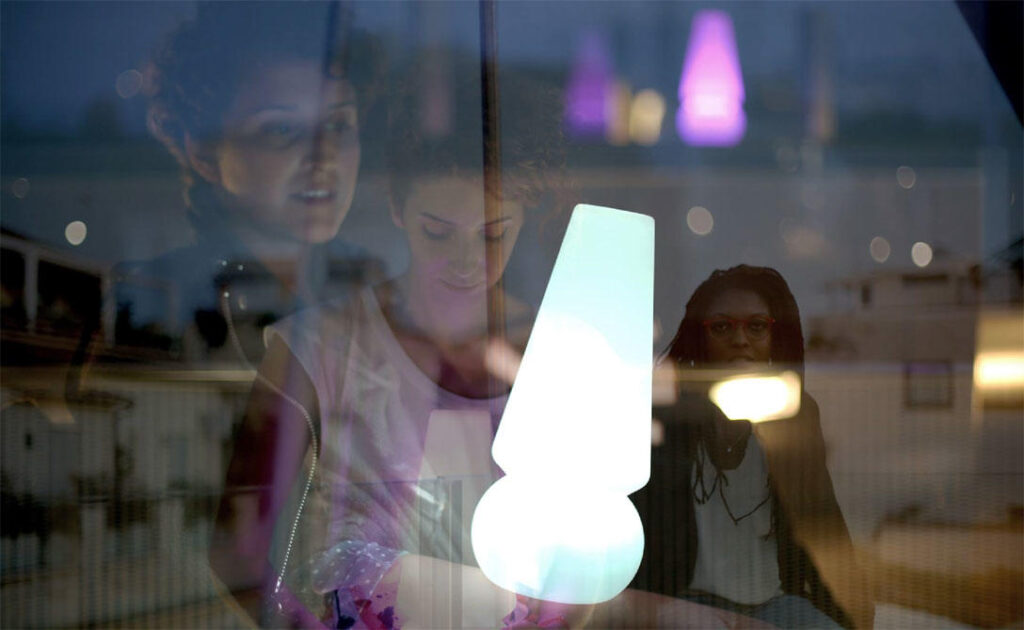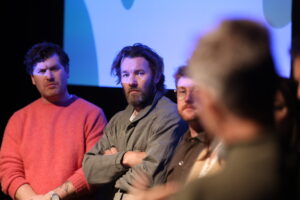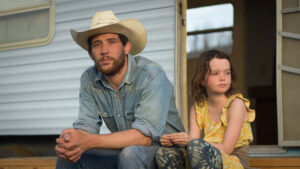One of the most exciting things about starting each year with the Sundance Film Festival is having a front-row seat for the bright future of independent filmmaking. Captivating stories, soon-to-be iconic shots, and timely cinematic conversations are all cornerstones of the 2023 Festival slate — and those are all birthed from the hearts and souls of these filmmakers. That means that this year we have the privilege of being introduced (or reintroduced for returning filmmakers) to the artists behind 111 features, 64 shorts, and four indie episodic projects.
And while we learn a lot from the art that these storytellers share with us, there’s always more we can learn about these filmmakers as people. This year we decided to get to the bottom of those artistic wells with our Backstory questionnaire!
Ashley Sabin — one half of the multi-hyphenate storytelling team behind Kim’s Video — remembers the inspiration that sparked her and David Redmon’s newest film that’s premiering in the Next section at the 2023 Fest as something unbelievably simple: “Renting a VHS.” Fitting for the brand-new documentary surrounding Yongman Kim’s infamous New York City film rental collection and its long and winding international journey.
Full of whimsy, genre-bending, and love of cinema, you could say that Sabin and Redmon’s latest film parallels their own self-described journey — always “planning their next adventures in filmmaking, fully understanding their plans never pan out as expected.” And when the duo says they’re planning their next adventures, they’re not joking. With one night owl (Redmon) and one early bird (Sabin) in this creative partnership, they’ve got all their bases covered. “We keep the candle burning 24 hours!” says Sabin.
Below find out how this team gets it all done, Sabin’s favorite memories during Kim’s Video production, and one thing you don’t know about her.
Why does this story need to be told now?
Corporate media and big companies have limited the kinds of narratives that are being told. [Kim’s Video] urges a more diverse storyteller to speak and be listened to. Also don’t forget the ghosts of cinema.
Your favorite part of making Kim’s Video?
Returning the collection from Salemi, Sicily back to its home in NYC.
What was a big challenge you faced while making this film?
The film was full of challenges. But where there is a will, there is a way. We persevered despite the obstacles.
How did you get into filmmaking?
DIY: picking up a camera and learning — and making mistakes. Plus, passing out postcards to get people into the theater, booking our films in cinemas and universities throughout the U.S. and creating our own distribution label. This label died a quick death after Netflix phased out DVDs.
Why is filmmaking important to you? Why is it important to the world?
Film is life. Life is film. It’s an important medium to convey and tell stories. We are first and foremost storytellers and use the medium of film to push our craft.
If you weren’t a filmmaker, what would you be doing?
A video store clerk.


What is something that all filmmakers should keep in mind in order to become better cinematic storytellers?
Take risks and listen to the inner voice.
What’s your history with Sundance Institute?
First film ever at Sundance in 2005 was Mardi Gras: Made in China. It was [also] our first film. We met our finishing editor Mark Becker and his wife Nadine and daughter Violet on a bus. Funny as we’ve stayed in touch with him throughout the years. Then, in 2014, we had a short called Choreography. We got funding from Sundance Institute and went to the Producers Lab with a film called Girl Model.
One thing people don’t know about me is _____.
I am left-handed.
What three things do you always have in your refrigerator?
Local organic vegetables, some slugs munching, ready-to-make crêpe batter.
What’s your favorite film that has come from the Sundance Institute or Festival?
Dark Days, Videocracy, [and] Exit Through the Gift Shop. (I couldn’t do just one!)
Films are lasting artistic legacies; what do you want yours to say?
Viva Kim’s!








